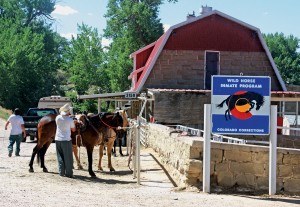By Peter Anderson
Around our house, some of the biggest piñon and juniper trees I’ve ever seen offer us a little shelter from the wind and weather that often blows in hard from the southwest. Nearby, a little to our south, a line of aspens that follows Crestone Creek down the mountain adds to our sense of enclosure and harbors warblers and western tanagers during the warmer months, as well as a colony of turkey vultures.
In the mornings the vultures leave their nearby roost, drifting down along the line of aspens then cottonwoods that follow the mountain drainages out onto the valley floor, scanning county roads with eye and nose for the latest roadkill. In the evenings, we watch them come home to our perch on the flanks of the Sangres, circling by overhead and spiraling down to their roost in the aspens along Crestone Creek, about a quarter of a mile to our south. The arroyo they often seem to follow to and from their roost runs by our house. In their honor, we call it Vulture Gulch.
One morning almost ten years ago, I enticed Rosalea into the pack with the prospect of a visit to the vulture roost down the road. It was early enough in the morning that few of them have left. As we followed the trail along the creek into a little clearing we saw them overhead, at least twenty vultures, several of them facing toward the sun, their wings outspread and gathering sunlight.
“Don’t disturb them, Papa,” Rosalea said, after a minute or two looking up at them in that clearing. We kept walking. Down the trail, several vultures flew overhead
“Where do you think they’re going?” I asked Rosalea.
“They’re going to school church,” she said.
“Where’s that?”
“It’s way out there,” she said, pointing out over the valley. “And it’s where your dreams go when you close your eyes.”

